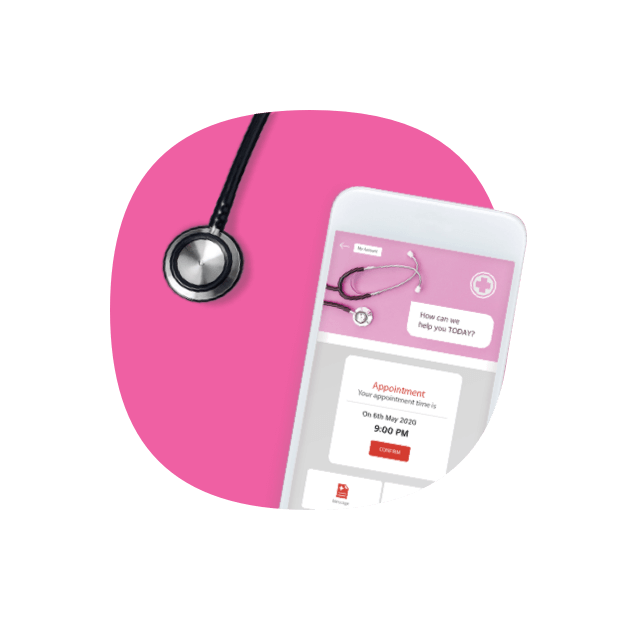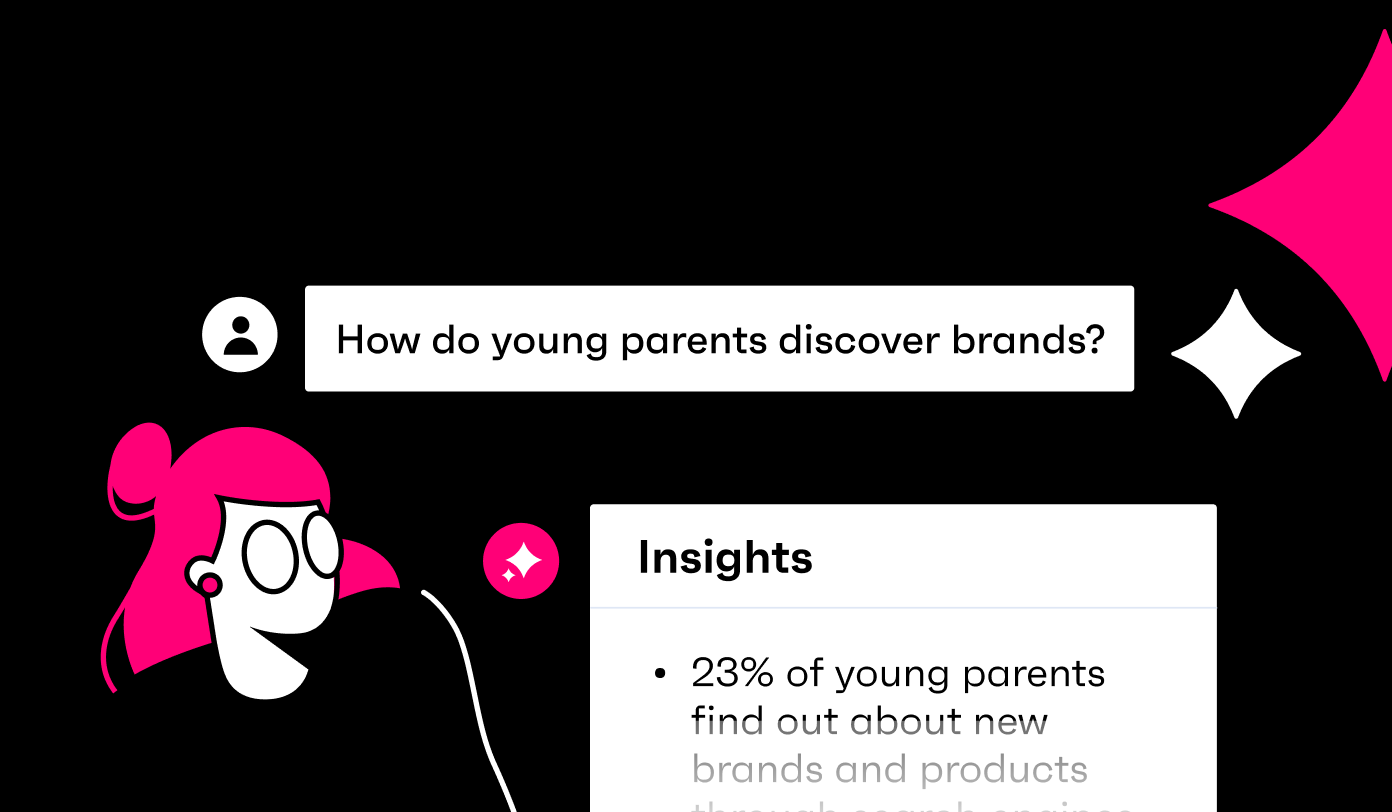Brand health tracking is a huge part of business success. With consumer trends moving at the speed of light, it can be tricky to keep up, and even trickier to innovate. But before you can innovate with new products or campaigns, you need to take stock of your brand health, and understand the areas that need most attention. Be that boosting your brand reputation, increasing brand awareness, or unlocking your USP. Knowing how your consumers think and feel about your brand, and if it’s changing over time, is vital to brand success.
Think of it as your annual doctor’s check up, you might not always feel you need to go, but isn’t it better to be able to find any potential health issues before they become bigger problems?
What is brand health?
Brand health is a measure of how well your brand is performing against objectives and customer expectations. It’s a collection of metrics that track customer perception, brand performance, market share, and overall satisfaction with your brand.
Why brand tracking is important
Health is wealth, right? A healthy brand means happy customers, a competitive edge in the market, and maximized revenue streams. But it’s also more than that.
Regardless of sales success, it’s important to continuously analyze key trends and brand perceptions to stay close to how your audience is evolving, and how your brand needs to adapt to them.
Here’s just some of the top reasons to track brand health:
Understand your brand’s key strengths and weaknesses
When it comes to opportunities, tracking which brand qualities are most important to your audience, what sets your brand apart, which brand qualities are most important to your audience, and their key purchase drivers, can help drive performance and guide your strategy moving forward.
Stay ahead of the competition
Whether you’re a new player in the market, or you’re established and at the top of your game, keeping tabs on the competition is critical. You can see how you’re faring against the competition by tracking which brands your target audience is planning to purchase, and how this has changed over time.
Understand brand awareness and perception
You can also track how your brand awareness is growing over time, and whether you’re reaching (and resonating) with your target audience, or if a different approach is needed. This is vital right now; with new brand launches and competitors entering the market, many industries are undergoing disruption.
Unlock new audiences and opportunities
Brand health tracking allows you to understand the progress your brand has already made, and identify new opportunities for the future. Spotting emerging trends, or a rise in consumers being interested in your brand, can uncover new opportunities to tap into, like expanding into a new market or targeting a completely new type of customer.
With all of this info in your back pocket, you can make smarter strategic decisions on where to allocate budget next to drive the biggest impact.
Which brand health metrics should you track?
The metrics you choose to measure will depend on the priorities of your brand and your industry, so what brand health metrics are there? Here’s a list of some key measures to pay attention to, and what they mean for your brand and your competitors:
Unprompted awareness: Is your brand front of mind when consumers think about your category?
Prompted awareness: Are audiences aware of your brand, and your competitors?
Familiarity: How much do consumers really know about your brand
Consideration: How likely are consumers to consider buying your products or using your brand in the future?
Preference: How is your brand ranked in comparison to other competitors in the space?
Brand perception: What emotions, attitudes, and phrases do consumers associate with your brand, and how well does this align with your brand positioning?
Advocacy: How likely are your customers to recommend your brand to their friends, family, and colleagues?
Value: How much value do consumers place on your brand?
Usage: Have consumers used, or purchased from your brand in the recent past?
How to measure brand health
There are a few different methods you can use to check your brand’s health. You can focus on one, or combine a few different tactics to give you a more detailed view. Let’s take a look at three of the most common methods.
Consumer research
Using a consumer research platform to get real consumer insights can help track how your existing customer base feels about your brand, but also how the audience you want to target thinks and feels. This will give you a more holistic view of brand perception, and what you need to work on to turn your target audience into customers.
The wealth of syndicated data available in consumer research can help to broaden your view, keep your audience analysis on point, and make decisions you can stand behind every time.
Social listening
Social listening is a great way to track mentions of your brand and understand what your customers have to say unprompted.
Using social listening tools to monitor relevant hashtags or mentions, and then analyzing if they are positive or negative, can help show how your brand is being perceived in the world of social media. You can also track this over time to see any dips or improvements, particularly if you’ve been working on your brand’s social presence or overall reputation. You can combine this data with survey data to truly understand consumer sentiment around your brand.
Understanding your customers’ (and any potential customers’) experiences through social media listening can help you shape your brand to meet and exceed customer expectations.
Customer feedback surveys
Collecting customer feedback can help you track the health of your brand with your existing consumers. Sending out regular surveys, or tracking reviews, can allow you to keep tabs on your customers’ experiences and their affinity with your brand.
Every brand is looking to turn its customers into advocates, right? And online reviews are one of the best ways for customers to shout about your brand. Tracking how many positive and negative reviews you have, and what people are shouting about, can help you dial up on the stuff that’s working, and make those vital changes to the stuff that isn’t.
Bespoke brand tracking studies
Need to dig into something specific? You can take your brand health tracking to the next level with a custom brand tracking study. Here, you can design a bespoke survey to really get under the hood of consumer sentiment, and understand what your current and potential audience really think about your brand.
These surveys are sent to consumers of both your brand and your competitor brands, and how often they’re conducted is dependent on a heap of factors, including:
- The pace of change in the market
- The level of competition you face
- Your need to review the brand strategy on a regular basis
- Your need to proactively manage your performance
Tracking brand health with GWI
Now, we’d be pretty remiss if we didn’t mention how GWI can help you when it comes to brand tracking. Some of the world’s best brands use us to track their brand health, and there are two main ways to do it:
Self-serve consumer insights with the GWI platform
The first way is diving into our consumer research platform to self-serve insights relating to brand health. Using GWI is easy. Our platform gives you a whole heap of instant insights right at your fingertips. There’s no need to be an expert to get the data you need.
You can explore a wide range of questions in GWI Core to gauge brand sentiment, competition, popularity, and what your customers say they want from your brand.

Let’s dive into an example.
Say you’re in the consumer tech industry, and you want to know how you’re holding up against the competition. Simply build an audience you’re most interested in, and apply the question: Which brands would be your top choice when you next buy an electrical item?

We can see here that our audience of device owners are most likely to buy from Samsung, with Apple a close second.
From here, you can overlay other segments and time frames to look at how that brand popularity has fluctuated over time, understand what qualities your audience wants most from a consumer tech brand, and explore a whole host of other questions on topics including brand relationships, brand advocacy, brand discovery, brand attitudes, and purchase drivers.
Take advantage of our bespoke brand tracking services
Our customized research enables brands to work with our expert research teams to create, and distribute, bespoke surveys among their relevant audiences, helping them to dig deeper into how their brand is performing.
With our brand tracking, you can get really granular insights into how your brand is being perceived, understand key conversion points in the funnel, uncover strengths and weaknesses by asking specific questions, and identify purchase drivers for your audience.
Let’s take a quick look at how it works.
- Scope: We’ll work collaboratively to design a customized research program that meets your needs. This includes capturing critical metrics from your target audience and benchmarking you against your competitive set over time.
- Analysis: Our experts advise on the best analytics. We can measure funnel performance, key brand attributes, brand mapping (which is your position in the market versus your competitors), and even measure emotional responses to your brand.
- Review: We sync this custom brand data with existing GWI research and bespoke audiences to understand who’s falling out of your funnel, and how best to re-engage them.
Brand tracking example: How ONE Championship increased US viewers by 46% in just 6 months
Here’s a look at how ONE Championship conducted a brand tracking study with us to help skyrocket their business.
The problem
ONE Championship (ONE) – is the world’s largest martial arts organization. As part of their strategy to break into the US, they partnered with GWI to get a better picture of how their brand was perceived, and how they could make it really resonate with American fight fans.
The solution
Partnering with GWI, ONE tapped into their custom research with a brand tracker study to find out what parts of the brand these fans liked, what parts they disliked, and how these sentiments were moving over time. The research proved they were resonating with the right audience, and that audience was growing in the US.
The result:
- 46% increase in audience numbers over a 6 month period
- Sold-out US debut event
- Established a unique positioning in the American market
“We needed a long-term tracking study so we could monitor awareness and affinity ups and downs, and explain the why behind any movement. GWI was the perfect partner for that.”
Jane Guo, Vice President, Head of Analytics & Insights at ONE Championship
Check out the full case study here.
So there you have it, a brief intro into brand health. Want to hear more about brand tracking, and how to do it with GWI? Watch our on-demand webinar.
ROI with GWI: Brand tracking webinar
Watch now





.webp?width=495&height=317&name=pink_thumb_graphs%20(1).webp)
.webp?width=495&height=317&name=pink_thumb_letter%20(2).webp)
